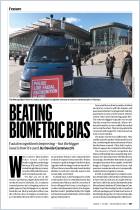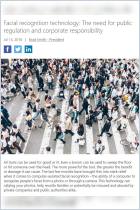
Facial Recognition
The controversial and nearly ever-present technology that could replace the fingerprint
Recommendation
Something like facial recognition technology was created 100 years ago by a French police officer. Now, it’s become omnipresent and mostly unregulated. The facial recognition technology industry is booming and expected to grow to $9.7 billion by 2022, but its technologies raise concerns about privacy and tend to succumb to racial stereotypes. This portfolio of illuminating articles compiled by Meher Ahmad, Adrian Chen, Chris Outcalt and Joy Shan for The California Sunday Magazine includes the viewpoints of people who use facial recognition technology, and how, and why.
Summary
About the Authors
Meher Ahmad is Associate Editor at The California Sunday Magazine, where Joy Shan is an associate. Blogger Adrian Chen is a former New Yorker staff writer. Chris Outcalt is a freelance writer.















Comment on this summary or Démarrer une discussion